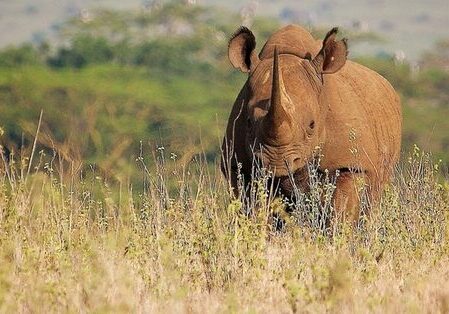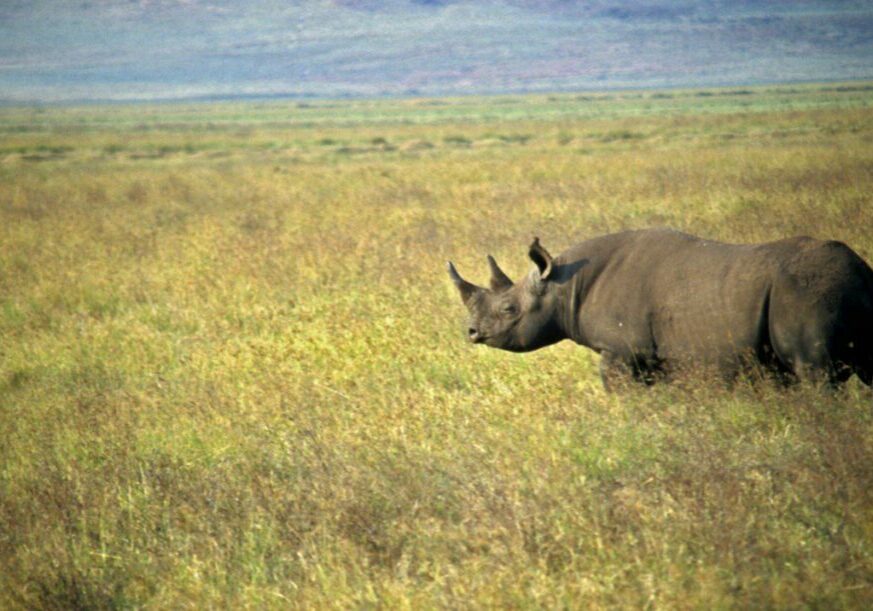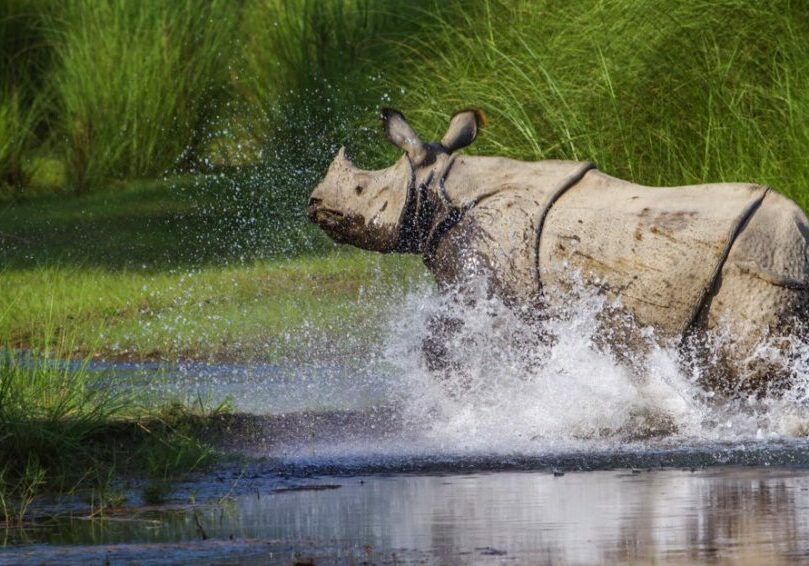According to the latest figures from Kenya, there were 938 black rhinos in the country in mid-2022 – an increase of nearly 10% in just one year.
This amazing success is testament to all the conservation work you’ve helped to support over the years, from rhino-monitoring patrols and ranger equipment to strong collaboration with local partners.
Though Kenya was once home to around 20,000 black rhinos, as few as 350 were thought to have survived by the mid-1980s after years of hunting and habitat loss. Rebuilding the population has been a slow process, not least because of the relentless threat of poaching.
Over the past decade, the population has been growing at an average rate of just 2.7% per year – so 2021’s 9.9% growth rate is a big leap forward. It far surpasses the goal of 830 black rhinos by December 2021, which was set in Kenya’s national black rhino action plan in 2017.
Despite this encouraging news, though, there can be no room for complacency. Black rhinos remain critically endangered, with only around 6,195 left in all of Africa.
Poaching, driven by international demand for rhino horn, is an ever-present danger. In 2020, Kenya celebrated its first year this century with no recorded cases of rhino poaching, but there were six confirmed cases in 2021, with one black rhino and five white rhinos killed for their horns.
While that’s a disappointing setback, it’s still a big improvement compared to a decade ago – 59 rhinos were killed in 2013 at the peak of the poaching crisis.
Climate change is another threat. For more than two years, Kenya has been experiencing severe drought, and a hotter, drier climate is likely to put more pressure on rhinos as resources such as food and water become scarce.
The increasing rhino population brings its own challenges. The population density in some rhino sanctuaries is now higher than it should be, which can lead to fighting and slow growth rates. In future, new areas of safe, suitable habitat are needed where rhinos can be relocated to establish new populations, expanding their range and taking the pressure off existing sanctuaries.
We’re addressing all these issues in Kenya’s new black rhino action plan for 2022-26, which we’ve supported Kenya Wildlife Service (the state conservation agency) and other local partners to develop.
And we’ll continue to support rhino conservation efforts on the ground, which range from supporting rhino-monitoring efforts and improving the living standards of rangers, to providing training on handling poaching crime scenes to increase the likelihood of successful prosecutions.
We’re really grateful to all of you who’ve supported this work over many years, including players of People’s Postcode Lottery and our amazing rhino adopters. In a world where wildlife populations are still declining, the black rhino’s resurgence is cause for celebration. Thank you!
Adopt a rhino
You can help us to protect rhinos in Kenya and other countries by adopting a rhino.
More to explore

You helped Kenya go a year with zero rhino poaching
Thanks to you, not a single rhino was killed by poachers in Kenya during 2020 – the first time that’s happened in more than 20 years

